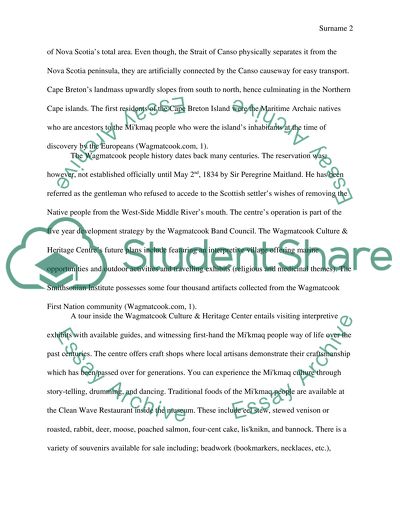Cite this document
(“Wagmatcook culture & hartige centre, Cape Breton,canada 866-295-2999 Research Paper”, n.d.)
Retrieved from https://studentshare.org/tourism/1462339-wagmatcook-culture-hartige-centre-cape
Retrieved from https://studentshare.org/tourism/1462339-wagmatcook-culture-hartige-centre-cape
(Wagmatcook Culture & Hartige Centre, Cape Breton,canada 866-295-2999 Research Paper)
https://studentshare.org/tourism/1462339-wagmatcook-culture-hartige-centre-cape.
https://studentshare.org/tourism/1462339-wagmatcook-culture-hartige-centre-cape.
“Wagmatcook Culture & Hartige Centre, Cape Breton,canada 866-295-2999 Research Paper”, n.d. https://studentshare.org/tourism/1462339-wagmatcook-culture-hartige-centre-cape.


